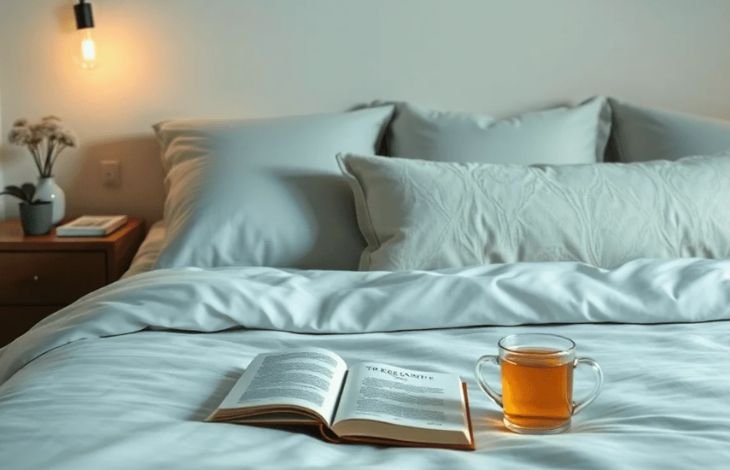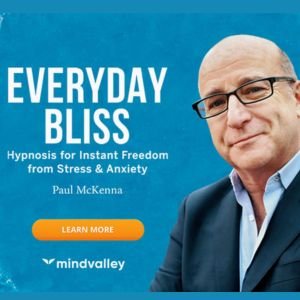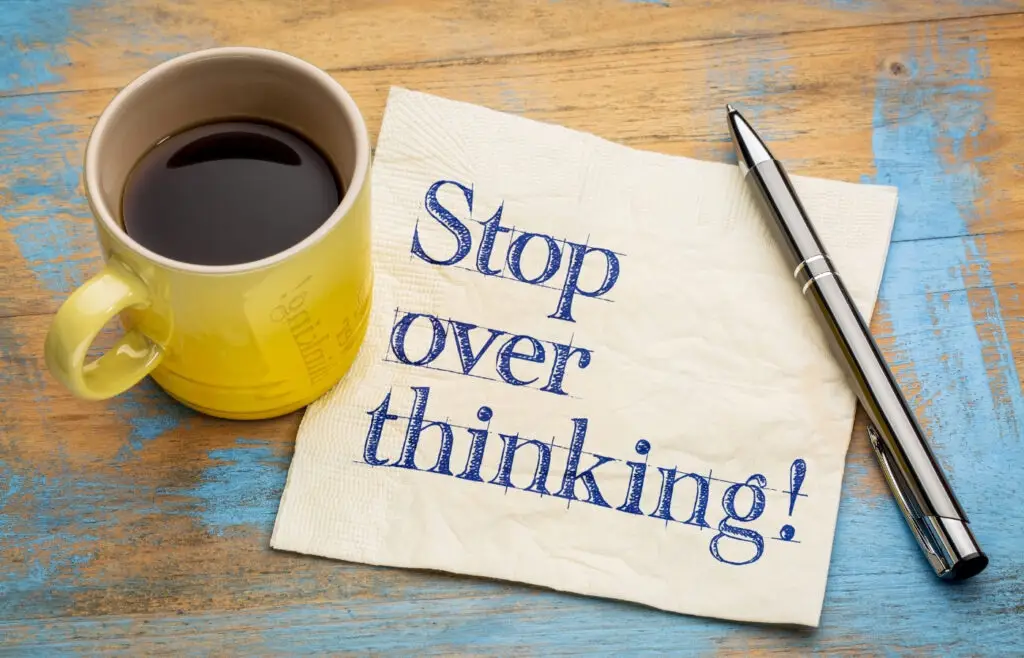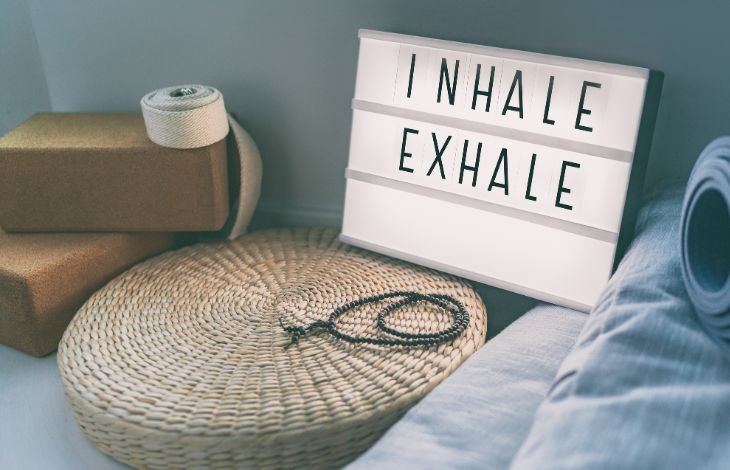
Unlock Peaceful Nights: What Do You Do When You Can’t Sleep
Do you find yourself staring at the ceiling, pondering what to do when you can’t sleep? Rest assured, you’re not the only one. Sleep problems, especially insomnia, impact countless individuals worldwide. In our fast-paced modern world, sleep troubles can creep up unexpectedly, affecting every aspect of our lives from our emotions to our work performance.
Why sleep problems matter: It’s essential to confront these challenges directly. Sleep deprivation can trigger numerous issues, from heightened anxiety to reduced life satisfaction.
How widespread is insomnia: You might be surprised! Research indicates that roughly 80% of people experience sleep difficulties at some time.
So, what do you do when you can’t sleep at night? When sleep eludes you, understanding what can help becomes essential. This is where calming practices enter the picture. These strategies can guide your body toward a more peaceful state.
Table of Contents
ToggleTable of Contents
ToggleAffiliate disclosure: some of the links on this site are affiliate links, meaning at no additional cost to you, I will be earning a commission if you click through and purchase.
Share this post:
Understanding Sleep Difficulties
When we’re talking about insomnia, we’re dealing with a real tough cookie. Insomnia is essentially a sleep disorder where folks find it hard to fall asleep, stay asleep, or sometimes even both. Imagine tossing and turning all night just to catch a wink! Common symptoms include:
Difficulty in falling asleep
Waking up frequently during the night
Trouble going back to sleep
Feeling tired upon waking
You’re not alone if this sounds familiar. A staggering number of adults experience insomnia—somewhere around 30% to 35% have brief symptoms and about 10% suffer from chronic insomnia. That’s a lot of people counting sheep!
Now, let’s talk about chronic stress—that sneaky culprit that impacts our sleep quality. Chronic stress can keep your mind racing at night like a hamster on a wheel. When stress hormones like cortisol are constantly high, it messes with your body’s natural rhythms. It’s like trying to swim upstream against a strong current; no wonder getting restful sleep becomes such an uphill battle.
In my own journey to better sleep, I’ve found that recognizing these patterns is the first step towards finding insomnia solutions that work for you. It’s not just about clocking in eight hours; it’s about improving the quality of those hours too.
The Role of Sleep Hygiene
You know those nights when you’re tossing and turning, staring at the ceiling, wondering what on earth you can do to finally catch some Z’s? You might want to think about your sleep hygiene. It’s not about cleanliness (although, hey, fresh sheets can’t hurt), but rather those habits and practices that are essential for a good night’s rest.
What is Sleep Hygiene?
Sleep hygiene refers to the routines and environment that promote consistent, uninterrupted sleep. It’s like setting the stage for a great show—your body needs the right cues to start snoozing. Good sleep practices help your brain know it’s time to wind down and recharge.
Practical Tips for Improving Sleep Hygiene:
Natural Light Exposure: Get outside during the day. Sunlight helps regulate your body’s internal clock, making it easier to fall asleep at night.
Consistent Sleep Schedule: Try hitting the sack and waking up at the same time every day—even on weekends. It trains your body to expect sleep at certain times.
Optimized Bedroom Environment: Make sure your bedroom is a sanctuary for sleep:
Temperature: Keep it cool; around 60-67°F (15-19°C) is ideal.
Noise: Consider using white noise machines or earplugs if needed.
Darkness: Blackout curtains can make a world of difference.
Avoiding Caffeine and Alcohol Before Bed: These can mess with your sleep cycle. Aim to cut off caffeine by mid-afternoon and limit alcohol in the evening.
When you’re contemplating what do you do when you can’t sleep, these tweaks might just tip the scales in favor of restful slumber. So next time you’re wide awake at midnight, remember these tips—they might just be your ticket to dreamland!
Relaxation Techniques for Better Sleep
When everything else fails, and you’re tossing and turning like a rotisserie chicken, relaxation techniques might just be what you need to calm your mind before sleep. There’s something incredibly soothing about controlled breathing for sleep, especially when it feels like your brain is running laps instead of winding down.
Controlled Breathing: Benefits and Methods
Let’s dive into something called controlled breathing. It’s one of those things that sounds super simple but can make a world of difference. Just imagine slowing down your breath and feeling stress melt away—sounds dreamy, right?
1. Dr. Andrew Weil’s 4-7-8 Breathing Technique
Ever heard of this one? It’s like a secret weapon against insomnia, and you can use it both before going to sleep at night, or when you wake up and have a hard time falling back asleep. Here’s how it works:
Inhale through your nose for 4 seconds.
Hold your breath for 7 seconds.
Exhale completely through your mouth for 8 seconds.
Dr. Weil swears by it for not just falling asleep but also for calming nerves in the middle of the day. It’s kinda cool how focusing on your breath can trick your body into relaxing.
For a more in-depth explanation of the methos and it’s wonderful benefits, check out the post How To Breathe To Reduce Stress: The Amazing 4-7-8 Technique
2. Breathing Apps for Guided Exercises
If you find focussing difficult and you mind starts to wander, there’s tech to help! Breathing apps offer guided exercises, making it easy to find a rhythm whether you’re in bed or on the go. Some favorites include:
Breethe App: Known for its peaceful soundscapes and guided meditations.
Mindfulness.com: Offers breathing exercises and meditations tailored to your personal wellness journey.
There are numerous apps to choose from, and everyone has their personal favorite. For an overview of a selection of apps, go ahead and consult our blog Breathe Easy: The 10 Best Apps for Breathing Exercises to find the one most suited to your needs and preferances.
Experimenting with these techniques can turn bedtime from a battleground into a sanctuary of peace. Sometimes it’s all about finding what clicks for you—whether it’s counting breaths or letting an app guide you through the process.
Body Scan Meditation for Deep Relaxation
Have you ever found yourself lying in bed with your mind racing, desperately wishing there was a way to turn off your thoughts? Well, that’s where body scan meditation comes to the rescue. It’s like giving your mind a gentle nudge to focus on the present moment instead of worrying about what’s coming next. This relaxation technique is all about paying attention to different parts of your body, acknowledging any tension you may be holding onto, and allowing it to melt away. Think of it as giving yourself permission to unwind and let go – a gentle but powerful tool that’s always there to help answer the question: what do you do when you can’t sleep?
Benefits of Body Scan Meditation:
Encourages a calm mind before sleep.
Helps recognize and release physical tension.
Promotes mindfulness and reduces stress.
How to Do a Body Scan Meditation:
Get Comfortable: Lie down or sit in a relaxed position.
Close Your Eyes: Start with some controlled breathing for sleep. Inhale deeply and exhale slowly.
Focus on Your Toes: Notice any sensations or tensions without judgment. Imagine them letting go.
Move Upward Gradually: Continue this process through your feet, legs, torso, arms, neck, and head.
Breathe and Relax: Take deep breaths as you visualize each part relaxing.
Practicing this meditation for sleep regularly can train your body to respond more effectively when insomnia strikes; think of it as building a relaxation reflex!
Again, apps are a wonderful tool to help you focus and guide you through the body scan meditation process. Many of them offer guided meditations specifically designed for sleep, with soothing voices and calming background music. Some popular options include Headspace, Calm, and Mindfulness.com.
Remember, consistency is key when it comes to reaping the benefits of body scan meditation. So, set aside a few minutes regularly or each day to indulge in this relaxation technique and watch your sleep quality improve over time.
Progressive Muscle Relaxation: Releasing Tension for Restful Nights
Another wonderful technique to try when you find yourself lying in bed, mind racing a mile a minute, and you’re pondering what do you do when you can’t sleep at night, is Progressive Muscle Relaxation (PMR). This relaxation technique involves tensing and then slowly releasing different muscle groups in your body, helping to calm the mind before sleep and prepare it for meditation-like tranquility.
Here’s how you can practice PMR effectively before bedtime:
Find a Comfortable Spot: Lie down in bed or sit comfortably.
Start at Your Toes: Focus on your toes. Inhale deeply and tense them for about 5 seconds.
Release and Breathe Out: Exhale as you relax those muscles, noticing the sensation of release.
Move Upward: Gradually work through each muscle group—feet, calves, thighs, abdomen, arms, and so on—tensing and relaxing.
Mind Your Breathing: Pair each tensing with an inhale, each release with an exhale.
This method not only promotes better sleep but also trains your body to respond naturally to relaxation techniques whenever insomnia strikes. Keep practicing even on good nights; that way, when stress hits, your body knows exactly what to do.
Imagery and Visualization Techniques: Creating a Peaceful Sleep Environment in Your Mind’s Eye
Ever tried closing your eyes and escaping to a serene beach or a lush forest when sleep just won’t come? Imagery and visualization are like mini vacations for the mind, especially effective in reducing stress and aiding sleep. It’s all about creating a peaceful mental space where your mind can unwind.
Imagining calming scenes can be surprisingly powerful. Here are some suggestions to try out:
Ocean Waves: Picture yourself lying on warm sand, hearing the gentle waves roll in and out.
Forest Walk: Imagine strolling through a cool, shaded forest, with sunlight peeking through the leaves.
Mountain View: Visualize sitting at the top of a quiet mountain, absorbing the vastness of the landscape.
If insomnia is not a chronic companion for you, but comes by fits and starts, practicing these visualization techniques regularly helps your body get accustomed to relaxing this way before insomnia even sets in. It’s like training your brain to hit the ‘calm’ button more effectively when you really need it, instead of lying awake wondering what do you do when you can’t sleep.
The Military Method: A Quick Path to Sleepiness When You Can’t Sleep at Night
The Military Method is a trick used by the U.S. Navy to help pilots fall asleep in two minutes or less. It’s perfect for when you’re tossing and turning, pondering what to do when you can’t sleep. This method focuses on relaxation techniques that promote better sleep.
Here’s how it works:
Relax your face: Start by easing tension in your face muscles, including your tongue, jaw, and the muscles around your eyes.
Drop your shoulders: Let your shoulders fall as low as they can. Follow this by relaxing your upper and lower arms on one side, then the other.
Breathe out: Exhale deeply to relax your chest.
Legs go loose: Finally, relax your thighs and calves.
After completing these steps, visualize a peaceful scene for ten seconds or repeat “don’t think” repeatedly. By practicing relaxation techniques like this before experiencing insomnia, you can train your body to respond quickly, making it easier to fall asleep.
Seeking Professional Guidance When Self-Help Strategies Fall Short
Sometimes, despite all the self-help strategies and relaxation techniques, sleep can still be elusive. That’s when it’s crucial to seek expert advice on insomnia solutions. Sleep experts can offer insights that are alighned to individual needs, and a tailored approach can lead to better outcomes and more peaceful nights.
Persistent sleep issues might signal underlying problems that need professional evaluation. A sleep specialist can carry out assessments to identify any sleep disorders and recommend appropriate interventions.
Professional guidance ensures you’re not navigating the complexities of sleepless nights alone. When counting sheep just isn’t cutting it anymore, turning to a specialist could be your next best step.

Final Thoughts
Achieving quality sleep is a journey that requires dedication, patience, and the right approach. While various relaxation techniques and sleep hygiene practices can significantly improve sleep quality for many people, it’s important to remember that there’s no one-size-fits-all solution.
From controlled breathing and body scan meditation to the military method and progressive muscle relaxation, these tools provide a comprehensive arsenal in the fight against sleeplessness when you are tossing and turning, wondering what do you do when you can’t sleep. However, if sleep difficulties persist despite implementing these strategies, seeking professional help is not just an option—it’s a responsible step toward better health. Sleep specialists can provide personalized solutions and address underlying issues that might be affecting your sleep quality.
Remember, good sleep is fundamental to overall well-being, and investing time in developing healthy sleep habits is an investment in your quality of life.
Leave a reply
Got any questions or want to share what strategies you use when finding sleep is an issue? Let me know in the comments below!







6 Comments
Kathy
26/12/2024 at 11:25 AM
I’ve never heard of the Military Method before! I’m definitely going to give it a try tonight! Great post!
Jarrod
26/12/2024 at 11:38 AM
I noticed I get great sleep if I practice breathing an hour before bed and then turn off all phones and screens. It primes me for sleep! Thanks for sharing this info, and I hope more people read this to improve their sleep!
David Stillwagon
26/12/2024 at 9:31 PM
Wow even your website looks soothing. Great information.
breatheintocalm.com
03/01/2025 at 10:59 AM
So glad you found it helpful, David!
Chantal Gaillardetz
06/01/2025 at 4:21 PM
This is a helpful read! Thank you for sharing!
HeyGen
16/04/2025 at 5:35 PM
I am extremely impressed with your writing abilities and also with the layout in your blog.
Is this a paid theme or did you modify it yourself? Either way keep up the
nice quality writing, it is rare to see a nice weblog like this one these days.
HeyGen!